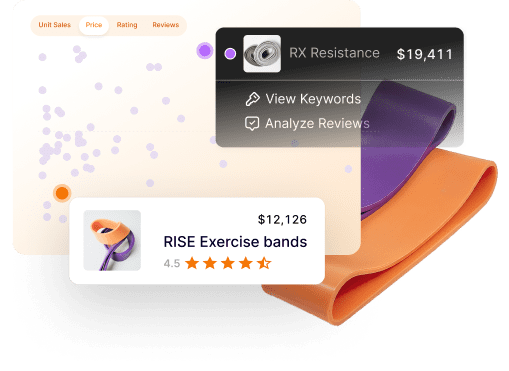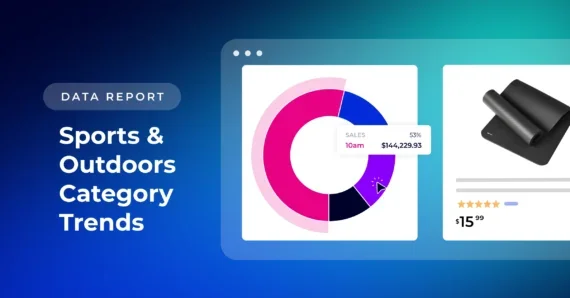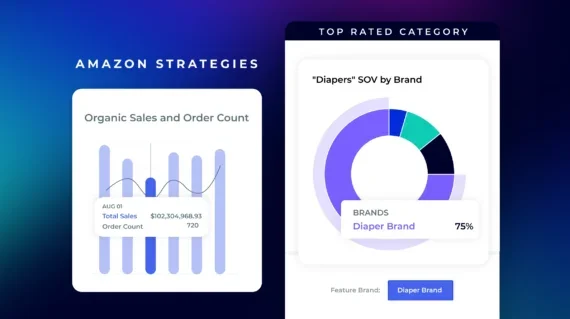In the competitive landscape of selling on Amazon, Amazon PPC advertising has emerged as a crucial tool for sellers to increase visibility and drive sales.
Not only do sellers need to be sure they’re targeting the right keywords in their campaigns, but something that may be overlooked by many sellers is when your ads should be running.
Among the various strategies utilized by sellers, dayparting has gained significant attention for its potential to optimize ad spend and target audiences more effectively.
In this article, we’ll dive into the concept of Amazon PPC dayparting, its benefits, implementation strategies, and best practices.
What is Amazon PPC Dayparting?
Dayparting, also known as ad scheduling, is the practice of scheduling PPC ads to run during specific times of the day or week when they are most likely to reach the target audience and yield the highest returns.
By analyzing historical data and customer behavior patterns, sellers can identify optimal time slots for displaying their ads.
For example, if you notice your products sell best in the afternoon, dayparting can be used to run your ads during your busiest time of day and turned off when sales are slower.
2024 Amazon Advertising Guide for Sellers
Whether you’re launching your first private label product, reselling wholesale products, or you own a large brand, it’s imperative that you have an Amazon advertising strategy in place.
Importance of Dayparting in Amazon PPC
In the context of Amazon PPC advertising, dayparting allows sellers to strategically allocate their budget towards periods when the conversion rates are highest, thereby maximizing the efficiency of their advertising campaigns.
By avoiding spending during low-traffic hours and/or days, sellers can minimize the waste of resources and achieve a higher return on investment (ROI).
The number one challenge all Amazon sellers and brands face is increasing ad costs, according to the 2024 Jungle Scout State of the Seller Report. By utilizing dayparting within your Amazon advertising strategy, you can ensure your ads only show during your busiest days or hours.
Benefits of Amazon PPC Dayparting
Ensuring your ad campaigns are running efficiently and profitably is something all sellers should be worried about. In fact, 38% of Amazon sellers are concerned with increasing advertising costs.
In order to combat rising costs, sellers should implement dayparting to allocate their ad spending more wisely. Let’s go over some more benefits of Amazon PPC dayparting.
- Enhanced targeting. Dayparting enables sellers to tailor their advertising efforts to align with their target audience’s browsing and purchasing behaviors. By displaying ads during peak shopping hours, sellers can increase the likelihood of reaching potential customers when they are most receptive to making a purchase. Sellers can also choose to turn the ads off for certain days when sales may be lower.
- Evenly distribute ad budgets. While dayparting is used to serve your ads during optimal shopping hours, sellers can also use dayparting to ensure their daily ad budget is evenly distributed throughout the day. Sellers can budget out with percentages for each hour of the day so you never run out of budget during peak conversion hours or when competitor budgets are exhausted.
- Cost optimization. By focusing on ad spend during hours with the highest conversion rates, sellers can avoid wasting their budget on less productive time slots. This cost optimization improves the efficiency of advertising campaigns, increases ROI, and ensures a better allocation of resources towards driving actual sales.
- Improved performance metrics. Implementing dayparting allows sellers to track and analyze performance metrics such as click-through rates, conversion rates, ACoS, and ROaS more accurately. By measuring the impact of different time slots on these metrics, sellers can refine their dayparting strategy over time to achieve better results.
How To Increase Your Amazon Conversion Rate
Strategies for Amazon PPC Dayparting
Now that you know what dayparting is and why it is important, let’s go over some strategies for PPC dayparting.
- Data analysis. The first step in implementing dayparting for Amazon PPC is to analyze historical data to identify patterns in customer behavior. Sellers should examine metrics such as traffic volume, conversion rates, and sales performance across different times of the day and days of the week.
- Identify peak hours. Based on the data analysis, sellers can pinpoint the peak hours or time slots when their target audience is most active on the platform. These are the periods when ad visibility is likely to translate into higher engagement and conversions.
- Adjust campaign settings. Once the peak hours have been identified, sellers can adjust their campaign settings within the Amazon Advertising platform to schedule ads accordingly. This may involve increasing bid amounts during peak hours to ensure higher ad placement and visibility.
- Monitor and optimize. Continuous monitoring of campaign performance is essential for optimizing dayparting strategies. Sellers should regularly review metrics and adjust their ad schedules based on evolving trends and customer behavior patterns.
Amazon Advertising Report
This annual report examines paid campaign data to explore how brands and sellers are advertising on Amazon. It also reveals which strategies and products result in the greatest return on ad spend (RoAS).
Best practices for Amazon PPC Dayparting
Want to start dayparting your Amazon PPC campaigns? Perfect, let’s go over some best practices when implementing dayparting into your Amazon Advertising.
- Start with broad time windows. When initially implementing dayparting, we suggest starting with broad time windows (morning, afternoon, evening) and gradually refining the schedule based on performance data.
- Consider time zones. Dayparting is based on the time zone of the advertising account, and rules apply time-based changes according to the timezone associated with each campaign.
- Test and iterate. Experimentation is key to finding the optimal dayparting strategy for a specific product or market. Sellers should conduct A/B tests and analyze the results to identify the time slots that generate the best ROI.
- Utilize automated tools. There are many tools available to help sellers effectively set up dayparting in their Amazon Advertising campaigns. Jungle Scout Cobalt Ad Accelerator has a dayparting feature to control ad spend down to the hour.

Here is what it looks like inside of the Ad Accelerator tool with dayparting turned on. In the image below, the days with a higher number indicate a larger portion of an advertising budget being allocated during those specific time slots.

How to set up dayparting in Jungle Scout Cobalt
Once you are signed into your Cobalt account, go to the Amazon Ads tab and click on campaigns.
Next, choose the campaign you want to set up dayparting for.

On the next screen, you will see a menu with different metrics. Scroll over until you see “Automation.” 
Here, you will see an option for dayparting. Enable dayparting and choose an automation profile or create a new one.

Now you will be able to set up your dayparting configuration. You can choose to raise or lower your bid multipliers for each day of the week or each hour of the day.

Once you are done, hit Save Changes, and your campaign is now set up for dayparting!
Downsides to dayparting
While dayparting can help advertisers reach their target audience during peak shopping times, there are some downsides to this strategy.
- This may result in overspending. If you only show your ads during peak shopping times for your particular product or niche, you may end up spending more per click during higher traffic times, thus counteracting your goal of reducing the cost per click and spending more of your budget in a shorter period of time.
- Not every customer shops at the same time. Sure, there may be times during the day when the majority of your customers are shopping, but you may miss out on the customers who have different shopping preferences. When dayparting, be sure to distribute some of your ad spend budget during slower times as well to target these customers.
Will you implement dayparting in your Amazon ad campaigns?
Amazon PPC dayparting is a valuable strategy for sellers looking to maximize the efficiency of their advertising campaigns and achieve better ROI. By scheduling ads to run during peak hours of customer activity, sellers can enhance targeting, optimize costs, and improve overall campaign performance.
With careful analysis, strategic planning, and continuous optimization, dayparting can become a powerful tool in the arsenal of Amazon sellers striving to succeed in the competitive ecommerce landscape.
Learn more about how Jungle Scout Cobalt can help automate and optimize your advertising campaigns.
Brian Connolly is an Amazon seller, ecommerce expert, and writer for Jungle Scout. He lives in the New Jersey Shore area with his wife and cat. When he isn’t writing advice online for aspiring and experienced Amazon sellers for Jungle Scout, he spends his free time boating, fishing, and selling boating-themed items on his Amazon business.










